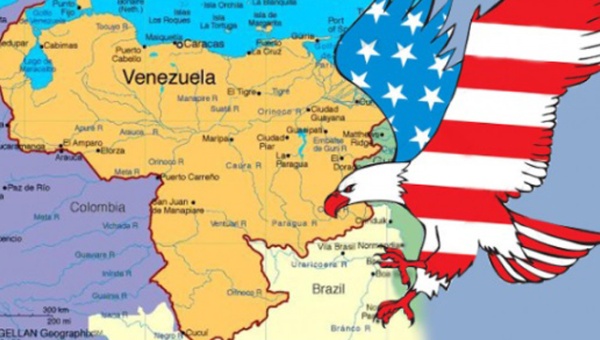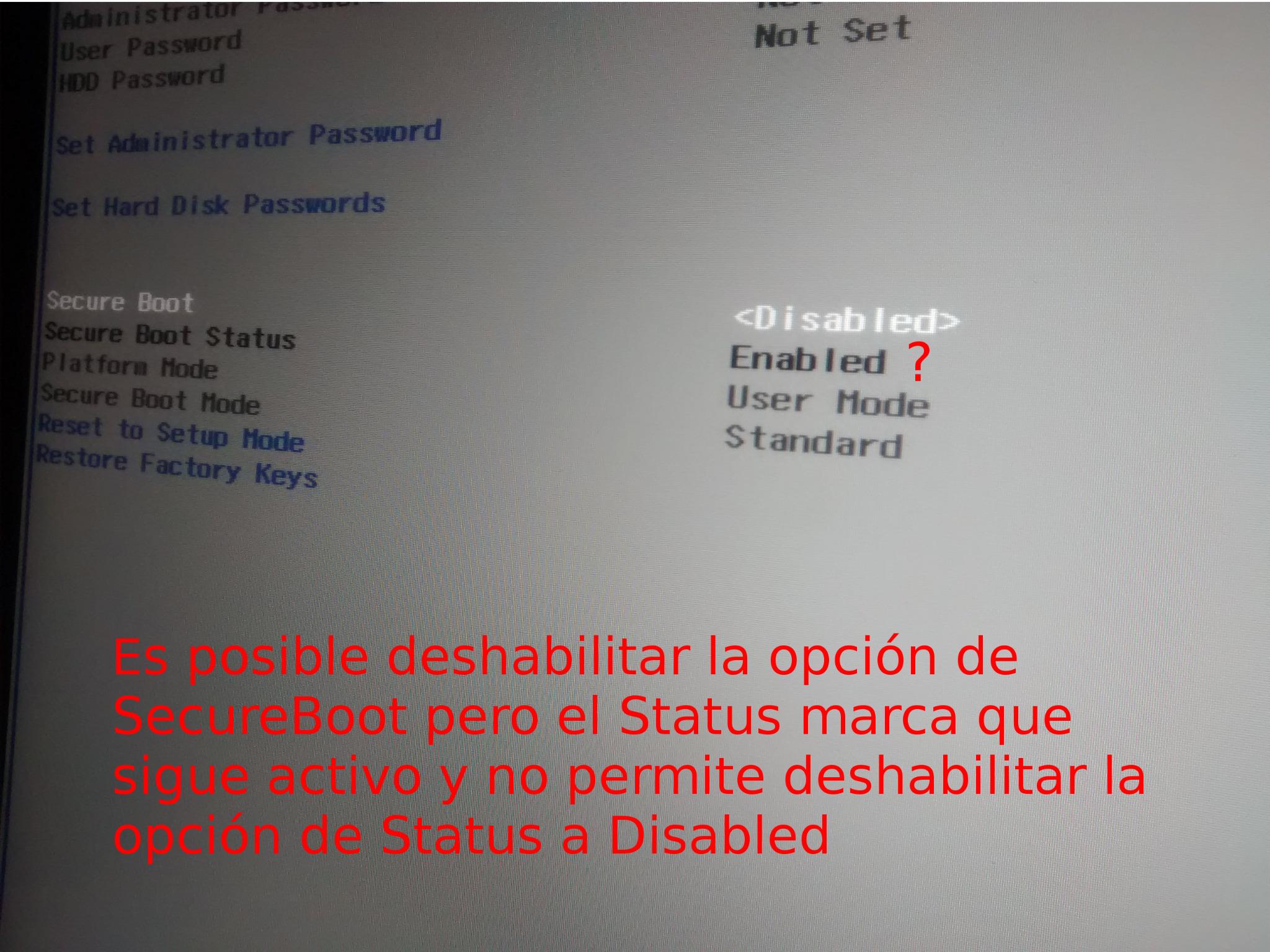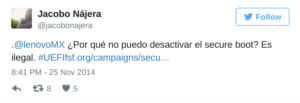En 2014, el Gobierno del Presidente Evo Morales promovió una ley que establece que el trabajo infantil en el país puede desarrollarse desde los 10 años, el único país del mundo en haber aprobado una norma de ese tipo. El código de Niñez y adolescencia establece que los niños pueden trabajar a partir de los 10 años en el entorno familiar, y desde los 12 años para terceros.
Segundo Encuentro Plurinacional de Educación de Niñas, Niños y Adolescentes Trabajadores
«Yo trabajo desde hace cuatro años. Lavo los platos en el puesto de comida de mi vecina y estudio por las tardes. El dinero que gano es para ayudar a sostener a mi familia, porque el sueldo de mi mamá (trabajadora del hogar) no nos alcanza”, afirma Mario. Tiene 15 años y en retribución a su labor recibe 400 bolivianos al mes.
Su testimonio fue uno de los que se escucharon el viernes 29 de abril de 2016 en el Segundo Encuentro Plurinacional de Educación de Niñas, Niños y Adolescentes Trabajadores, organizado por el Ministerio de Educación. «No me avergüenza trabajar, contó el adolescente. Todos mis amigos y mis maestros saben que trabajo, pero muchos profes no toleran los atrasos. Quisiera que consideren”.
Como Mario, en el país hay 34.000 estudiantes que trabajan, ganan un sueldo y estudian a la vez, reveló el ministro de Educación, Roberto Aguilar. Precisó que el dato se obtuvo por primera vez a través del Registro Único de Estudiantes (RUDE), relata la periodista Verónica Zapana.
Al inicio de gestión se consultó a todos los escolares del país si trabajaban y si obtenían remuneración por ello. «34.000 dijeron que sí , vale decir que son el 1,22% de los 2,8 millones de colegiales que registra el sistema educativo”, informó.
De acuerdo a los datos del RUDE, hay otro grupo de escolares que trabaja, pero no recibe un salario. «Cuando uno considera el trabajo doméstico o el familiar se incorpora a otros 260.000 niños”, precisó Aguilar.
Según la representante de la Unión de Niños y Niñas Adolescentes Trabajadores de Bolivia, (UNATSBO), Lizeth Reina Castro, en Bolivia hay más de 34.000 niños trabajadores, pero estos no estudian. Pidió por ello que dé carnets a esta población para tener un dato real de este sector. «En nuestros registros tenemos a más de 800 mil”, afirmó.
El Ministro de Educación comentó que lo que se busca con el encuentro, es lograr la inclusión de todos los niños al sistema educativo.
En el pleno del evento consultó a un centenar de niños ¿quienes están estudiando? Todos levantaron la mano. Este es uno de los temas que queremos que se fortalezca, que tengan las condiciones adecuadas y que desarrollen sus estudios sin que los discriminen, maltraten o estigmaticen por su labor”, apuntó.
En Bolivia, el Código Niño, Niña, Adolescente -promulgado en junio de 2014- permite el trabajo infantil desde los 10 años.
Aguilar explicó que el Estado admitió esa situación porque el trabajo infantil es una realidad en el país. «Si se negaría, se ocultaría esta realidad y sería esclavizante para los niños que deben seguir estudiando”, dijo.
En el evento, los niños, niñas y adolescentes trabajadores (NNATs) analizan, en mesas de trabajo, los cuatro puntos del plan de acción para operativizar el Programa de Atención Diferenciada para esta población.
El primer punto del plan consiste en que los NNATs tengan una credencial para que así se identifique a estos niños en el ámbito educativo.
La segunda propuesta consiste en la habilitación de la línea gratuita 800100050 para denuncias de discriminación y maltrato.
Asimismo, plantean un programa de apoyo pedagógico y becas de estudio para los menores trabajadores, informó el jefe de la Unidad Intra e Intercultural del Ministerio de Educación, Wálter Gutiérrez (1).
El Ministro de Educación remarcó que este encuentro de los NNAT busca adaptar un currículo educativo que fortalezca ciertas áreas o incorporar otras para que puedan desarrollar una actividad adecuada. En dicha reunión se discuten alternativas como la adecuación de días u horarios de clases para un niño que trabaja, apuntó Gutiérrez.
Para este objetivo, el Ministerio de Educación propondrá un plan de acción para operativizar un programa de atención diferenciada para los niños trabajadores.
Éste incluye un programa de nivelación y apoyo pedagógico para estudiantes trabajadores con rezago escolar. “Un niño trabajador improvisa y en ocasiones utiliza gradas u otros espacios para hacer las tareas, y puede ser que se proporcione una mochila o tablero”, comentó el jefe de la UPIIP. Para reforzar el plan se trabajará en el programa de sensibilización dirigido a maestros y autoridades. Se propondrá un sistema de asignación de becas de universidades (2).
Con el compromiso del Estado de garantizar la educación concluyó el pasado sábado 30 de abril el II Encuentro Plurinacional en Educación de Niñas, Niños y Adolescentes Trabajadores que se instaló el pasado viernes. El ministro de Educación, Roberto Aguilar Gómez, anunció una serie de acciones que fueron debatidas con los representantes de organizaciones de este sector.
«La condición de niño, niña o adolescente trabajador no puede privarles de su derecho a la educación. Si un niño no está insertado en el sistema educativo, vamos a trabajar juntos, con sus organizaciones, para incorporarlos al sistema educativo”, afirmó la autoridad. Recordó que los niños con dificultades económicas o desventaja social «se ven en la necesidad” de trabajar desde temprana edad para apoyar a sus familias.
Como resultado del encuentro, el Ministerio de Educación emprenderá un proceso de adaptación de la currícula educativa vigente con el propósito de brindar condiciones favorables a los procesos educativos de la niñez y adolescencia trabajadora. Esta modificación se acompañará con la sensibilización de los maestros.
«Asimismo, se ha definido la creación de centros de apoyo integral pedagógico en diferentes zonas del país que apoyen los procesos educativos de estos niños”, puntualizó Aguilar.
La especialización de docentes que se dediquen a la enseñanza de niños, niñas y adolescentes trabajadores también fue anunciada como un pilar fundamental de las políticas para garantizar la educación de este sector de la población.
El Gobierno de Evo Morales enviará a un grupo de niños trabajadores a Ginebra para Conferencia de la Organización Internacional de Trabajo (OIT)
El Gobierno de Evo Morales enviará a un grupo de niños trabajadores a Ginebra para defender ante la Organización Internacional de Trabajo (OIT) una reciente ley que permite el trabajo infantil en Bolivia a partir de los 10 y 12 años que la organización, en cambio, fija a partir de los 14 años.
El ministro de Educación, Roberto Aguilar, explicó el viernes que la delegación de niños irá a explicar que el Gobierno dictó una ley en 2014 con normas que protegen a los menores que trabajan en Bolivia.
Por ejemplo, los niños deben contar en sus labores con dos horas para estudiar, y quedan excluidas faenas pesadas como la «zafra» (o cosecha de caña de azúcar), entre otras normas. El código laboral para el trabajo infantil permite que los menores desde los 10 años trabajen en el entorno familiar, y desde los 12 años, para terceros.
El viaje está motivado porque Bolivia figura entre los países que ratificó el Convenio 138 de la OIT sobre la edad mínima de 14 años de admisión laboral.
«En la OIT va haber una evaluación del código niño, niña (de Bolivia). No sólo lo han cuestionado, no lo reconocen y están poniéndolo en una situación de llamada de atención a Bolivia. En Ginebra se va a tomar la decisión si se sanciona o no internacionalmente a Bolivia», mencionó Aguilar.
«Tenemos que prepararnos de manera conjunta porque internacionalmente se cree que es lo peor que ha podido hacer Bolivia para los niños trabajadores y por eso necesitamos mostrarle que no es una violación de los derechos de los niños sino más bien se quiere normar y velar por los niños que trabajan», agregó el ministro Aguilar.
El jefe de la Unidad de Políticas Intracultural, Intercultural y Plurilingüismo (UPIIP), del Ministerio de Educación, Wálter Gutiérrez, dijo que los mismos niños trabajadores pidieron asumir su defensa. “Llevarán una propuesta. También se hará reuniones con los ministerios de Trabajo y de Justicia para sustentar nuestra posición y defender el Código 548”.
Lizeth Castro, de 16 años de edad, coordinadora nacional de la Unión de Niños y Adolescentes Trabajadores de Bolivia, llevará junto con otros niños la experiencia de los menores bolivianos. La adolescente comentó que esta ley es un avance para el sector ya que les puede ofrecer condiciones para trabajar. «Queremos que se nos escuche. Esta ley, la hemos pedido al Gobierno porque nuestra realidad es diferente. Acá en Bolivia los niños trabajamos desde pequeños, no podemos negar nuestra realidad y la ley establece eso y norma que no se nos explote», explicó. El viaje a Ginebra está previsto para fines de mayo para asistir a la 105ta Conferencia Internacional del Trabajo, del 30 de mayo al 10 de junio 2016 (3).
Políticas emancipadoras de consenso con los “actores directos”
El Gobierno nacional está elaborando la respuesta a las observaciones efectuadas por la Unicef y OIT respecto de la norma que permite el trabajo infantil desde los 10 años, informó el ministro de Educación, Roberto Aguilar.
De acuerdo con la autoridad de Educación, la respuesta será presentada en la reunión de mayo a realizarse en Ginebra, Suiza.
Aguilar sostuvo que la norma fue de consenso con los “actores directos”, niñas y niños trabajadores, que el Estado lo asumió y respaldó, porque no fue fruto de la “presión”.
“Se están preparando documentos, testimonios y se llevará a un grupo de niños trabajadores para que hagan conferencias paralelas y ellos puedan exponer que este no es un tema de arbitrariedad del Estado”, dijo.
Asimismo, sostuvo que el poder visibilizar el trabajo infantil establece emitir sanciones contra quienes hacen mal uso de la flexibilidad laboral.
“En otros países no se cumple, porque hay niños esclavizados, niños ocultados en condiciones infrahumanas”, afirmó Roberto Aguilar a Cambio (4).
DISERTACIÓN DEL DR. ROBERTO AGUILAR GOMEZ – MINISTRO DE EDUCACIÓN DE LA REPÚBLICA PLURINACIONAL DE BOLIVIA
El Ministro de Educación de la República Plurinacional de Bolivia, el Dr. Roberto Aguilar Gómez, disertó en el III Encuentro del Movimiento Pedagógico Latinoamericano que se ha desarrollado en Costa Rica el Jueves 03 Diciembre 2015.
“Envío un saludo fraterno de nuestro Presidente Evo Morales.” Así comenzó el Ministro, arrancando un aplauso caluroso de la Congresales Latinoamericanos.
El Ministro Aguilar Gómez presentó un trabajo denominado “Avances y desafíos que enfrenta la educación. Bolivia: REVOLUCIÓN EN LA EDUCACIÓN”.
Una síntesis de la historia de la educación en Bolivia de la colonia a nuestros días.
Como para dejar en claro algunas ideas sobre evaluación expresó: “Las pruebas PISA son mecanismos de control sobre la educación. Es una imposición neoliberal.”
“Queremos hacer de la educación nuestra principal bandera.”
“Bolivia vive en un constexto en América Latina, articulado y estimulado con lo que acontece en América Latina y el mundo.
Hay un nuevo espacio de redistribución del mundo donde las potencias van por los recursos naturales , base del desarrollo económico. Por eso el imperialismo intenta la desarticulación de los gobiernos vinculados al pueblo.
En 2005 la renta de hidrocarburos en Bolivia era de 300 millones de bolivianos, luego de la nacionalización en 2014 la renta fue de 6600 millones. Por eso es imprescindible para los grupos de poder recuperar estos espacios: con intentos de golpes de Estado en distintos países de nuestra Región.”
“El imperialismo no perdona nuestra soberanía de los centros financieros internacionales y nuestras políticas sociales en beneficio del pueblo. Los grupos transnacionales, de derecha quieren desandar las formas de manejar el Estado y la economía en nuestro país, en los países con gobiernos populares.”
En la reseña histórica de la educación señaló distintos momentos:
-1825-1950 – Herencia Colonial: excluyente y discriminador.
-1955-1993 – Universalista : homogenizador – urbano / rural
-1994-2014 – Ley 1565 de Reforma Educativa.
“La Ley de Educación empezó a revertir años de una educación neoliberal privatizadora, que provenía del Banco Mundial. Las disposiciones generales que surgieron de esta Ley fueron por consenso. En algunos puntos sobresalientes inamovilidad funcionaria – cargos por concursos, anteriormente eran por decretos -, la sindicalización y la organización estudiantil.
Un avance importantísimo fue la decisión de incorporar en la Ley que la formación docentes quedaba en manos del Estado – anteriormente en manos privadas -.”
“Esta Ley fue asumida por las organizaciones sociales con un amplio nivel de participación”.
“Estos cambios fueron posibles gracias a la sanción de una nueva Constitución que obtuvo el 64 % de apoyo popular. La nueva Constitución fue “irreverente”, con una mirada del pueblo y no con la visión sacrosanta de Europa. Empezar a construir un Estado Plurinacional, representando la memoria, la historia, la ciencia, los saberes y los conocimientos de los pueblos y naciones. Esta Constitución tiene un sentido unitario, social de derecho, plurinacional, comunitario, respeto a los 36 pueblos y naciones indígenas originarios campesinos y plurilingüe.”
“A partir de esta nueva Constitución construímos nuestra propia visión en educación: la educación es un derecho “fundamentalísimo”. Tuvimos que luchar contra las herencias coloniales.
Establecimos la educación como un derecho para todas y todos, un derecho a lo largo de la vida. El Estado asumió la responsabilidad de la educación.
La educación es gratuita, hemos disminuido la tendencia privatizadora – de 1200 establecimientos privados ahora hay 800 -.
Antes la educación inicial era privada ahora la garantiza el Estado.
La educación es obligatoria hasta el secundario.
Otro logro fue haber disminuido al 1,2 % el analfabetismo, gracias a la ayuda de los hermanos venezolanos.
Hemos puesto en marcha una educación descolonizadora. La educación se da en la lengua de la cultura de cada pueblo. Hemos armonizado la curricular.
Nuestra educación es intra-cultural, intercultural y plurilingüe.
Hemos aumentado el presupuesto educativo: más inversión, mejoras salariales, mejor infraestructura.
En 2005 había 18300 profesores de nivel secundario, en 2015 hay 49000.
Pasamos de 5000 docentes de nivel inicial a 9000 en la actualidad.
Hemos puesto en marcha Programas de Formación Docente complementaria de dos años. Ya se han titulado como licenciados 45 mil y habrá más de 100 mil a fines de 2016. Este proyecto es socio –productivo – comunitario. Hemos sistematizado más de 15 mil experiencias de prácticas docentes.”
“Más de 21 mil docentes evaluaron la aplicación de la curricular.”
“Estos son algunos de los avances en nuestra educación a partir de la decisión del Presidente Evo Morales y de la participación de las organizaciones populares que hemos dado vuelta la historia de una educación colonial.”
“La educación será fundamental para seguir avanzando en más derechos”, ha concluido el Ministro Aguilar (5).
Reconocimiento del trabajo infantil en condiciones dignas y proyecto decolonial
Un aspecto importante del Buen Vivir y del proyecto decolonial boliviano es el aporte del trabajo de los niños/as a la economía familiar como espacio de dignidad, socialización y empowerment: hay que recordar la fuerza emancipatoria del movimiento de los niños/as y adolescentes trabajadores organizados en UNATSBO, un sindicato con 10.000 miembros y un archipiélago de grupos y organizaciones de base que han pedido al presidente Evo Morales de investigar las ONGs de cooperación internacional; la nota publicada por la Cámara de Diputados el día 20 de diciembre de 2013 es muy clara: “Algunas ONGs de Bolivia están manipulando a niños con fines políticos y financieros”.
Contra la tendencia de las convenciones internacionales que prohíben el acceso al empleo por debajo de los 14 años, el Parlamento del Estado Plurinacional de Bolivia aprobó el 2 de julio de 2014 un nuevo Código del Niño y del Adolescente que da paso, bajo ciertas condiciones, al trabajo de los niños a partir de los 10 años.
Es un proceso contracorriente que yo he acompañado personalmente, realizando varias investigaciones, artículos, libros como por ejemplo “Diversidad en movimiento” (6) que en junio de 2011 he presentado en La Paz durante el seminario internacional “Los niños y la calle en los países andinos. Precariedad, socialización y dinámicas urbanas” (7) gracias al apoyo de IFEA y de la Embajada de Francia en Bolivia y con una nota publicada en 6 idiomas de la agencia FIDES del Vaticano (8). Esta visión contra-hegemónica que desafía la visión euro-centrista de la infancia y adolescencia no se limita a Bolivia, es parte de un movimiento de acción y pensamiento crítico a nivel mundial que yo he documentado en el libro On children’s rights debt – Reconsidering the debates about working and street children in a globalized world” (9), un trabajo colectivo que he coordinado juntos a expertos de México, Bolivia, Brasil, Italia, Senegal, Zimbawe, India.
Concluyendo, agradezco a René Fernandez, Embajador de Bolivia ante la Unión Europea, que me ha enviado un importante respaldo del Gobierno Plurinacional del Presidente Evo Morales con relación a mi trabajo de investigación y lobby, un respaldo político publico publicado en mi libro “Emancipaciones de calle” (Ed. Mediafactory, 2015) que yo he presentado en el Parlamento Europeo (10) y en la Universidad Católica de Lovaina el pasado 20 de octubre de 2016.
Notas
- http://www.paginasiete.bo/sociedad/2016/4/30/bolivia-34000-ninos-trabajan-estudian-revela-primer-registro-94975.html
- http://www.la-razon.com/sociedad/NNAT-ninos-alistan-defensa-infantil-OIT_0_2481951815.html
- http://www.emol.com/noticias/Internacional/2016/04/29/800460/Ninos-bolivianos-defenderan-en-Ginebra-ley-que-permite-trabajo-infantil-desde-los-10-anos.html
- http://cambio.bo/?q=node/5428
- http://ctera.org.ar/index.php/internacionales/ie-ieal/item/2029-sobresaliente-disertacion-del-dr-roberto-aguilar-gomez-ministro-de-educacion-de-la-republica-plurinacional-de-bolivia-en-el-iii-encuentro-del-movimiento-pedagogico-latinoamericano-en-costa-rica/2029-sobresaliente-disertacion-del-dr-roberto-aguilar-gomez-ministro-de-educacion-de-la-republica-plurinacional-de-bolivia-en-el-iii-encuentro-del-movimiento-pedagogico-latinoamericano-en-costa-rica
- http://bifea.revues.org/4107
- http://www.fides.org/es/news/31560-AMERICA_BOLIVIA_La_distincion_necesaria_entre_trabajo_infantil_y_explotacion#.VMEq7otZjIU
- http://alainet.org/active/73946
- https://diversidadenmovimiento.wordpress.com/2014/11/14/new-book-edited-by-morsolin-on-childrens-rights-debt-reconsidering-the-debates-about-working-and-street-children-in-a-globalized-world
Tomado de: http://www.rebelion.org/noticia.php?id=211844
Fuente de la imagen: http://st.gonzoo.es/img/2013/04/1886_967_544.jpg?1366374582




 -Sabemos que acercarse al mundo del software libre no lo es todo ¡pero es un gran paso para cuidar nuestra privacidad! Y para defender el anonimato… Porque el anonimato sí importa, y así lo explican desde
-Sabemos que acercarse al mundo del software libre no lo es todo ¡pero es un gran paso para cuidar nuestra privacidad! Y para defender el anonimato… Porque el anonimato sí importa, y así lo explican desde 









 Users Today : 53
Users Today : 53 Total Users : 35461134
Total Users : 35461134 Views Today : 124
Views Today : 124 Total views : 3420956
Total views : 3420956